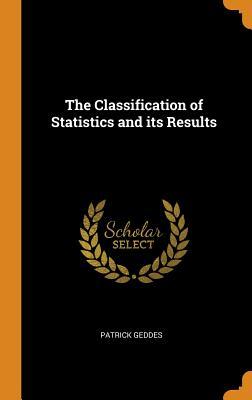Download The Classification of Statistics and Its Results - Patrick Geddes file in ePub
Related searches:
On classification with empirically observed statistics and universal
The Classification of Statistics and Its Results
Statistics and Classification Experiments
Lecture 14: Classification and Statistical Sins Lecture Videos
UK economic statistics sector and transaction classifications: the
Sources and classification of health workforce statistics - WHO
Institutional sectors and classifications for R&D statistics
Raw Data, Classification of Data and Variables: Concepts and
History of the statistical classification of diseases and causes - CDC
1906 2952 3864 2395 2046 2123 3660 2685 415 3028 1425 1488 2073 2567 1925 3365 3282 1216 4496 4034 1648 4794 2534 4934 3463 1677 871
Guttag finishes discussing classification and introduces common statistical fallacies and pitfalls.
Descriptive statistics tell us the features of a dataset, such as its mean, median, mode, or standard deviation. Start sorting through your data with these tips, tools, and tutorials.
Comparison of different non-statistical classification methods. Ondřej popelka1, jiří hřebíček, michael štencl, michal hodinka.
In the world of statistics, there are two categories you should know. Descriptive statistics and inferential statistics are both important.
The south carolina department of corrections protects the citizens by confining offenders in controlled facilities and by providing rehabilitative, self-improvement opportunities to prepare inmates for their re-integration into society.
Oct 6, 2020 learn about the different types of classification and how to effectively classify your data in data protection 101, our series on the fundamentals.
Discussion of the multivariate supervised and unsupervised classification once you have identified your training samples, multivariate statistics are calculated.
(classification of statistical data / variable – numeric vs categorical).
Contribute to brenda! your enzyme data is important for brenda. Send us your paper, and we will do all the work to include your data into our database.
Classification, or taxonomy, is the process of identifying, naming and categorizing living things based on their physical and biological characteristics. A classification, or taxonomy, is the process of identifying, naming and categorizing.
Feb 18, 2021 statistics is the collection, description, analysis, and inference of conclusions from quantitative data.
Geography is central to the work of the census bureau, providing the framework for survey design, sample selection, data collection, and dissemination.
The splus system provides most of the statistical analysis software that you will need in speech analysis.
What is a classified map?� why can it be useful to classify data.
See how different areas of statistics apply to real world problems from fantasy baseball to election polling.
History of the statistical classification of diseases and causes of death.
We continue to monitor covid-19 cases in our area and providers will notify you if there are scheduling changes. We are providing in-person care and telemedicine appointments.
Google scholar provides a simple way to broadly search for scholarly literature. Search across a wide variety of disciplines and sources: articles, theses, books, abstracts and court opinions.
The data in the example mentioned in the introduction according to the classes in your school, we will eventually classify the data in form of a statistical series.
The united states international trade commission is an independent, nonpartisan, quasi-judicial federal agency that fulfills a range of trade-related mandates. We provide high-quality, leading-edge analysis of international trade issues to the president and the congress.
In this paper we shall consider the exact distribution of wald's classification statistic v v in the univariate case, some theoretical approximations in various.
Find tables, articles and data that describe and measure elements of the united states tax system. An official website of the united states government help us to evaluate the information and products we provid.
This information was first published in february 2008 as an annex to the national statistics code of practice “protocol on statistical integration and classification”.
Classification has applications in a wide range of fields including medicine, engineering, computer science and social sciences among others.
The process of arranging data into homogenous groups or classes according to some common characteristics present in the data is called.
This is the final post in my statistics series and it will be focusing on classification� previously in the series i've shown how to generate clusters in both alteryx.
The classification method makes use of mathematical techniques such as decision trees, linear programming, neural network and statistics.
Written procedures and guidelines for data classification policies should define what categories and criteria the organization will use to classify data and specify.

Post Your Comments: